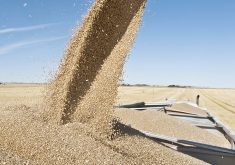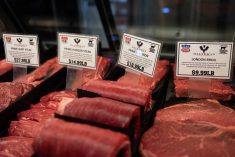It’s too early to say what impact Algeria’s decision to boost domestic production and cut durum and wheat imports will have on Canadian producers, says the Canadian Wheat Board.
Algeria is Canada’s top market for durum, buying 633,000 tonnes last year, or 18 percent of total Canadian exports.
The Algerian government recently announced plans to cut durum and wheat imports by at least two-thirds by 2014 and boost domestic production to make up the shortfall.
The government said it will provide subsidies totalling $2.7 billion US per year to farmers to increase production of durum, wheat and other agricultural commodities.
Read Also

India slaps 30 per cent import duty on yellow peas
India has imposed a 30 per cent duty on yellow pea imports with a bill of lading date on or after Nov. 1, 2025.
CWB spokesperson John Lyons said the board is adopting a wait-and-see attitude.
“It’s understandable for a country to try to become self-sufficient,” he said.
“But it’s a five-year plan and it’s too early to judge the policy’s impact or to determine how successful they will be in reaching their goal.”
He said Algeria and other North African countries grew excellent crops last year, registering a 70 percent increase in production, but the region’s climate doesn’t always favour growing grain.
“It is very prone to drought.”
The board expects Algeria to remain a large importer of durum for the foreseeable future, he added.
Algeria has bought an average of 761,000 tonnes of durum a year from Canada over the past 10 years, ranging from a low of 368,000 tonnes in 2003-04 to a high of 1.4 million tonnes in 1999-2000.
Exports are 114,600 tonnes so far this year, down from 352,700 tonnes at the same point in 2008-09.
Algeria’s decision to pursue self-sufficiency by subsidizing wheat and durum production comes at the same time as another country in the region moves in the opposite direction.
Saudi Arabia is in the midst of a program to replace subsidized wheat production with imports. Government subsidies were used to promote irrigated wheat production in the 1970s and 1980s, with farmers receiving up to $1,000 a tonne. Production peaked at 4.5 million tonnes in 1993.
The Saudis say they plan to buy three million tonnes annually by 2016. Annual wheat consumption is 2.6 million tonnes.














